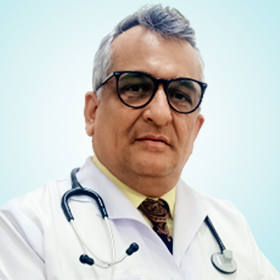
Heat wave is defined based on the temperature thresholds over a region in terms of the actual temperature. In India, if the maximum temperature of a station reaches at least 40°C or more for plain areas and at least 30°C or more for Hilly regions, the heat wave condition is defined. According to India Meteorological Department (IMD), heat wave in India is occurring from March to June and in some regions even in July. While the peak month of the heat wave over India is considered as May.
Although anyone can suffer from heat-related illness at any time but some people including infants & children up to 4 years, people above 65 years, obese people, and physically ill remain at greater risk than others. So, in order to deter the impact of heat wave, it is important to take expert’s advice.
According to Physicians at Kailash Hospital, Noida, the impact of heat waves on health typically involves dehydration, heat exhaustion, heat cramps, heatstroke, and acute cerebrovascular accidents.
Heat Cramp is a kind of heat-related illness that occurs usually in leg and abdominal muscles. Its symptoms include painful cramps, profuse sweating, flushed & moist skin, etc.
- In order to get rid of heat cramps, one has to move to cool or a shaded place. Applying firm pressure or gentle massage on cramping muscles can be helpful in the spasms.
Heat Exhaustion is the middle layer of the illness caused due to the heat wave. It can develop after several days of exposure to high temperatures and inadequate or unbalanced replacement of fluids. In this one may show symptoms of heavy sweating, weakness, headache, vomiting, fainting, etc.
- Measures that may reduce heat exhaustion are cool showers, cooling rooms, lightweight clothing, and appropriate rest.
Heat Stroke comes into effect when the body can’t control its temperature and the temperature increases to 106°F (40°C) or above. In this condition, the body’s temperature rises rapidly, the sweating mechanism fails, and the body is unable to cool down. Patient can also develop nausea and vomiting, rapid breathing, dry skin (no sweating), strong pulse, headache, alteration in mental state, and a possibility of unconsciousness. Heatstroke is a kind of severe medical emergency and delay in such condition can be life threatening.
- For emergency medical services, one should call for an Ambulance and take the victim to Kailash Hospital immediately.
Before the arrival of first responder from the chain of healthcare, the attendant should move the heat wave victim to a cooler environment and try a cool bath or sponging to reduce body temperature. It should be kept in mind that the patient with heat stroke should not be given fluids.
Prevention from Heat Wave:
Here are five key measures one should take to minimize the impact of the heat wave –
1) Avoid going out in the sun, especially between 12.00 noon and 3.00 p.m. Wear lightweight, light-colored, loose, and porous cotton clothes. Use protective goggles, umbrella/ hat, shoes or sleepers while going out in sun.
2) During hot weather you will need to increase your fluid intake, regardless of your activity level. For body re-hydration, you can use plenty of fluids such as water, ORS, homemade drinks like Lassi, Torani, Lemon Water, Buttermilk, etc.
3) Avoid strenuous activities and workouts in the afternoon. If you work outside, use a hat or an umbrella and also use a damp cloth on your head, neck, face, and limbs.
4) Try to keep your living area cool, use curtains, shutters or a sunshade. Try having frequent cool showers, wet your hands, face & neck, use wet blankets.
5) Drink sufficient water as often as possible. Use fans, coolers, damp clothing, and take cold water bath frequently. Provide plenty of fresh water for pets, and leave water for them in a shady area.
Approved By:
Dr. Sanjay Mahajan
Sr. Consultant Physician & Intensivist
DNB (Med), MNAMS

